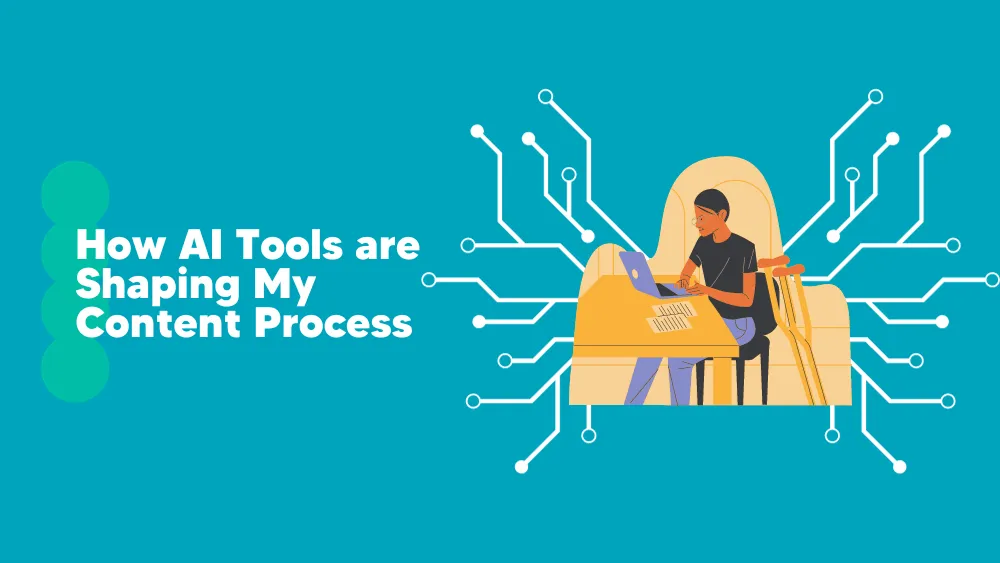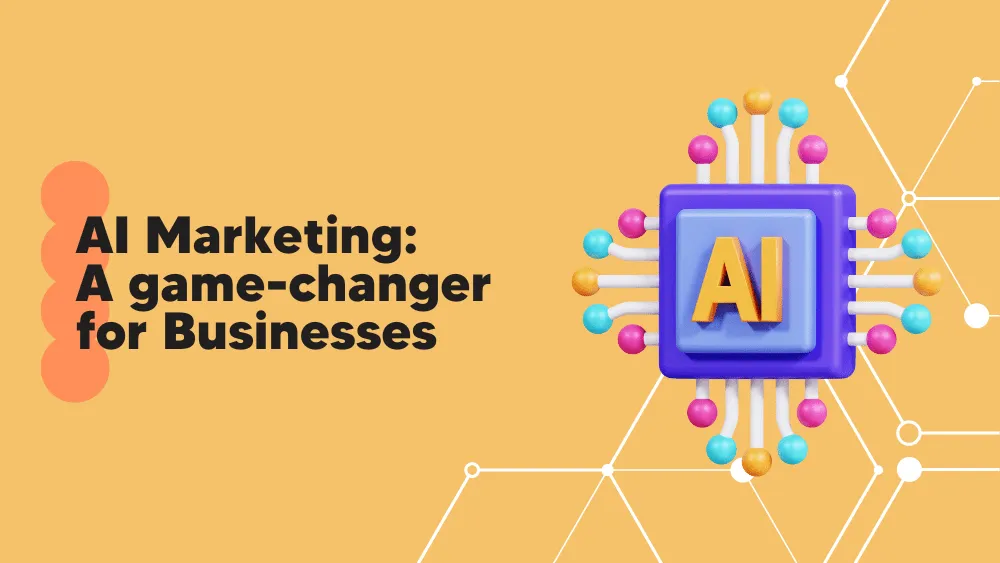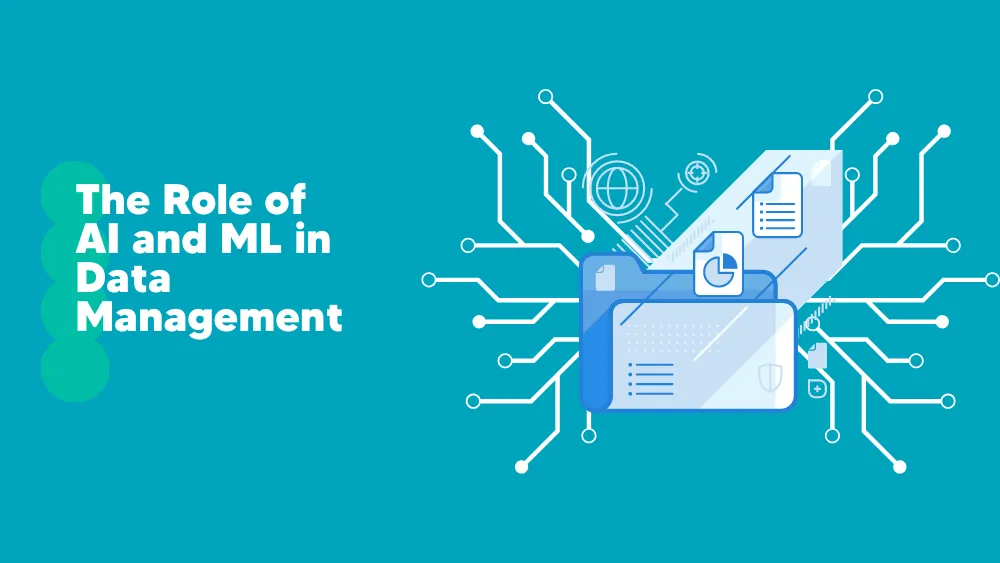Blurring the lines between tech and text, AI tools have emerged as game-changers, enriching the content creation process for writers everywhere
I still vividly recall the buzz surrounding the first appearance of Chat GPT. Ah, the digital murmurs of its prowess, the speculative whispers about its potential! As a tech enthusiast, my fingers itched with excitement to dive into conversations with this AI marvel. So, naturally, I did. I spent hours, not just minutes, engaging, probing, and, to be honest, sometimes attempting to outwit this new digital entity.
During these countless exchanges, a curious thought popped into my head: could this virtual conversationalist assist in my content creation process? So, I took the plunge. And what followed was a roller coaster of ‘aha!’ moments mixed with occasional furrowed brows of exasperation. It’s like teaching a new dog old tricks; not all attempts land perfectly. Yet, I unearthed a revelation through trials, errors, and many hearty laughs.
While it can’t (and shouldn’t) take over the entire mantle of content writing, AI, with its myriad tools, can be a worthy sidekick on this storytelling journey, and I’d love to take you through every step of it because that’s where Benefits of AI in writing kick in.
How AI tools in content creation Have Enhanced My Process
While the human touch is irreplaceable, the integration of AI tools has dramatically amplified the efficiency and scope of my work. These tools, operating in the background, streamline tedious processes, inject data-driven insights, and often inspire fresh, innovative approaches. They’ve become invaluable assistants, empowering me to focus on the nuances and flair of my writing, rather than getting bogged down by the boredom of raw data accumulation.
Audience and Keyword Research Phase
Creating content for a business that doesn’t know its audience very well, just yet, demands some research. Sometimes you just don’t get all the information you need on the silver platter, and so, I need to delve into their concerns, anticipate their interests, and pinpoint the topics and keywords that resonate most. Doing all of this manually was always a daunting task, consuming vast amounts of my time.
But with the right set of artificial intelligence tools in content writing, my research process has become vastly more efficient. Instead of wading through endless search engine results or sprawling spreadsheets in an endless game of “Find Waldo”, these tools distill the information, giving me concise, actionable insights. I now have a direct line to suggestions on topics or frequently asked questions, which are invaluable when I’m aiming to produce engaging content.
Here’s a look into the AI tools in content creation that I’ve integrated into my workflow:- Semrush: While many know it as an SEO tool, I’ve found its Topic Research feature indispensable for identifying trending subjects and content gaps.
- Frase.io: This tool has been a game-changer for me. By focusing on user intent, it hands me content briefs, question recommendations, and topic scores, simplifying the initial stages of my content creation.
- ChatGPT: I’ve found that posing topic ideas or questions to it can often provide fresh angles or perspectives I hadn’t initially considered.
Understanding the Topic: Peeling Back the Layers with AI tools in Content Creation
Every topic is like an onion, with layers waiting to be revealed. As a writer, my job is to understand and dissect each layer to serve my readers the juiciest bits. Previously, this meant diving deep into countless articles, journals, and forums – a task as intricate as solving a Rubik’s cube blindfolded.
Thankfully, AI tools have transformed this labyrinthine task into a more streamlined process. Gone are the days of rummaging through digital haystacks for that golden needle of information. Now, AI serves me the essence of the topic on a silver saucer, elucidating the ‘why’, ‘how’, and ‘so what’, all while pointing out the conversation hotspots.
Allow me to introduce the AI maestros that guide my research:- Bing AI: Great tool, as it not only gives you the information that you need, summarised and organized, but also the sources that it used to provide you with an answer.
- Visually: An artist in its own right, providing a splash of clarity through infographics and visuals, because, let’s face it, the audience love a good picture book.
- AnswerThePublic: The whisperer of public sentiment, it clues me into the burning questions and throbbing concerns the audience has about a topic.
- BuzzSumo: The town crier announcing the latest trends, giving me a pulse on what’s hot and what’s not in the digital town square.
Outlining
There’s a distinct kind of anxiety that comes with staring at a blank page. Trust me, it’s real. Sketching the initial strokes, or what you’d commonly refer to as ‘outlining’, isn’t really my cup of tea. But here’s where AI, and in particular ChatGPT and other LLMs, have made a notable difference in my writing process.
I present them with the bulk of my research, and they help produce a basic outline. However, it’s rare that this initial output aligns perfectly with what I’ve visualized. So, instead of starting from scratch, I find myself shifting into editing mode. This phase often transforms the original outline substantially, but the result is a clearer, more coherent structure.
With this refined outline at hand, drafting the content becomes a straightforward task. The groundwork is already done, which streamlines the process of putting together the first draft. It’s efficient, saves time, and reduces the initial hesitation I used to experience.
Here, I mainly use the following AI tools for writers:- ChatGPT: A conversational AI that everyone knows – a great brainstorming buddy.
- Jasper: A versatile AI tool, Jasper is designed not just for outlining but for various content generation needs. It provides a structured breakdown of topics, making it easier to draft coherent content.at extra oomph to the narrative.
- ShortlyAI: An AI writing companion that helps in creating initial drafts or outlines for various content forms, providing a strong base upon which to build.
The First Draft
No matter how seasoned, every writer occasionally hits that wall where words just won’t flow. Squeezing a lemon that’s completely dry doesn’t work very well, but well, deadlines exist. Here, any LLM (Large Language Model) really, works like a charm. I tend to either feed them the text that I wrote so far, and ask for suggestions, or ask them to provide me with a few versions of the element I’m having a particular problem with – be it creative imagery, a headline, or a way to explain something particularly complicated in an easy-to-understand form.
My go-to LLMs:
- ChatGPT (obviously)
- Claude
- Notion AI
Grammar and Style Checks
As much as I’d like to tout my impeccable knack for linguistic precision, the truth is, that the English language, with its, sometimes weird, rules and nuances, often demands a vigilant guardian. Every writer has that tiny voice inside their head nudging them, questioning if that comma is in the right place, or if that word truly captures the essence of their sentiment. Even with a keen eye, the occasional slip-up isn’t just possible—it’s almost guaranteed.
The beauty of these grammar and style AI tools in content creation lies not in their infallibility but in their consistent ability to offer a second opinion. A suggestion here, an alternative phrasing there, and before you know it, you’ve refined a sentence that already felt ‘just right’ into something even more polished. It’s a harmonious dance of man and machine, each lending their strengths to the other.
Here are the two that I’ve recently got to appreciate:- Grammarly: Beyond just spell-checking, it’s an adept tool that offers nuanced suggestions for phrasing and style, helping finesse every sentence to its best form.
- Hemingway Editor: Ideal for trimming the fat, it’s a godsend when it comes to distilling complex sentences into their purest, most readable essence.
Where AI Falls Short
As much as AI has made inroads into various domains, there remain certain nuances and depths that it struggles to grasp. Its capabilities, while impressive, have boundaries. Beyond the vast datasets and algorithms, some terrains still elude its reach, particularly those that are deeply human. Here’s where I’ve noticed some disadvantages of AI in writing:
Lack of Emotional Depth
When it comes to number crunching, data processing, or even linguistic patterns, AI often excels. But, and it’s a rather sizable ‘but’, delving deep into the intricate tapestry of human emotions? That’s a maze AI hasn’t fully mapped out yet. I recall once asking an AI tool for a heartwarming narrative. The tool delivered a story that ticked all the boxes structurally but missed out on the raw emotion—a touch of melancholy mixed with joy—that such a tale evokes. The result? A narrative that felt robotic, lacking the warmth of genuine sentiment.
Dependency Risks
The lure of AI is undeniable. It’s akin to a shiny new toy, always ready to play, always on hand to offer assistance. Yet, there’s a fine line between utilizing it as a tool and leaning on it as a crutch. I’ve often found that, in my eagerness to generate content quickly, I’ve surrendered too much control, letting the AI shape the narrative. It’s in moments like these, on rereading the content, that I sense a disparity. The content feels less ‘me’ and more machine. The unique voice, the personal touch, the little quirks that make my writing distinct – they all can fade, overshadowed by the AI’s clinical efficiency.
Quality of Research
AI’s strength is undoubtedly its ability to pull vast amounts of data in the blink of an eye. However, understanding the nuance, significance, or the underlying tone of that data? That remains a distinctly human domain. On numerous occasions, I’ve fed a topic into an AI research tool, and while it furnished a plethora of data points, it missed the heartbeat. For instance, while researching cultural traditions of a particular community, the AI presented the ‘what’ and ‘how’ brilliantly. Yet, the ‘why’—the cultural significance, the emotional resonance, the stories passed down generations—remained untouched. This served as a stark reminder that data without context is like a book with its soul missing.
Not to mention that most AI tools want to provide you with an answer to your question so much, that it’s not afraid to alter, or even fully make it up. Just ask a famous US lawyer who tried to present the court with a case that didn’t exist!
While AI offers unprecedented advantages, it’s crucial to remember that it’s a tool, not the craftsman. The essence of storytelling, the depth of emotion, scrupulousness, and the ability to connect with readers remains the purview of human writers. AI can enhance, or help, but it cannot replace.
Conclusion
For me, as a content writer, these tools are undoubtedly invaluable, but they don’t eclipse the core of what makes content truly impactful: the human perspective. AI can provide data, optimize for search engines, and even suggest sentence structures, but it can’t fully grasp the depth and intricacies of human emotion, culture, and individual experiences.
It’s essential to remember that while AI is an excellent tool to aid in the writing process, it’s just that—a tool. The direction, voice, and essence of the content come from the writer. In my journey, I’ve learned to balance leveraging AI’s efficiency with maintaining my personal touch, ensuring that the content remains genuine, relatable, and authentic.







